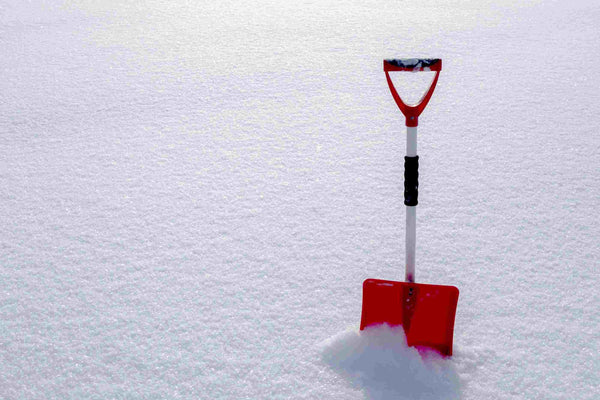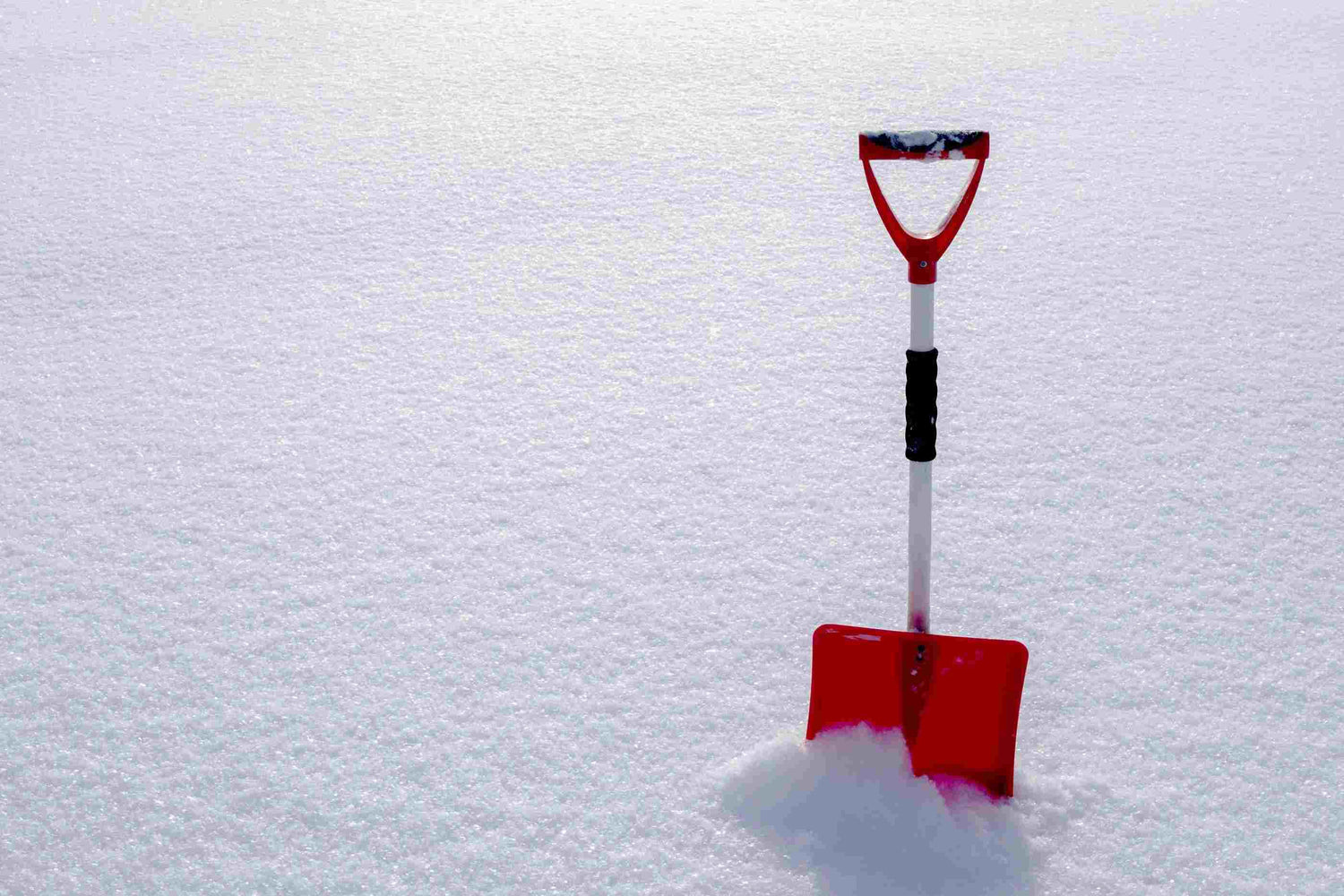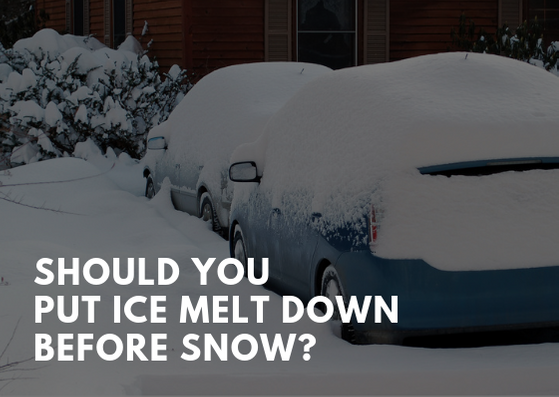
How to clear snow off a concrete or asphalt surface (like your driveway or walkway) is a major topic during the winter. There are several methods, but what they are, which ones to use, and what effects these options have on you and the environment are all important questions that we’ll tackle below.
How to Melt Snow
There are a number of ways that you can approach both industrial and residential snow removal. Some of the more commonly used substances include:
1. Chemicals
Nearly all de-icing chemicals work in the same way. They start by lowering the freezing point of the surrounding snow and ice. Then they form a slushy solution that seeps below the ice and snow, breaking the connection between them and the pavement and melting the ice/snow in place. Naturally occurring chemicals include sodium/calcium/potassium/magnesium chloride, while ammonium nitrate/sulfate and urea are all man-made substances. Sodium chloride (also known as rock salt) and calcium chloride are most commonly used.
2. Chemical Combos
Due to the possible negative effects some traditional chemicals can have on the surface material, plants, and wildlife that they come in contact with, manufacturers have been looking for better solutions. Ice Ban is a thick liquid chemical that can be combined with some of the more commonly-used de-icers. Studies have shown that the combination actually minimizes the harmful results of using the naturally-occurring chemicals, making products such as Ice Ban increasingly more popular. Adding liquid agents to salt (also known as pre-wetting) is another method that helps improve the efficacy of the salt combo.
3. Abrasives
Sand is frequently used during snowstorms. Though it won’t melt the ice or snow, sand makes the area less slippery, giving pedestrians and drivers more traction, thereby preventing accidents.
4. Anti-icing agents
Anti-icing agents prevent bonding between the pavement and falling snow, making for faster, easier, and safer snow removal. The liquid is applied to the pavement prior to the storm, and it can last for hours or even days depending on the quality, weather conditions, and amounts used. If using this option, snow must be removed quickly to prevent the bond from forming once the anti-icing agent has worn off.
The appropriate snow removal method for your driveway or walkways will depend on several factors, including area size, temperature of the pavement, and the facilities and supplies available to you. For example, liquid chemicals require large tanks and spray equipment in order to mix the salt and liquids properly and safely before applying.
Efficacy of Snow Removal Options
When weighing your snow removal options, it can be difficult determining which material will work best for you. Several factors will determine the efficacy of a de-icing solution, including:
- How fast and/or long the chemical is active for
- How much material is needed to get the job done
- The temperatures at which the materials will be most effective
- Any side effects the substance may have
In short, you want to find one that is cost-efficient, safe, and will get the job done in a reasonable amount of time. Let’s take a look at a few of these factors to give you a better understanding of your options.
Activation Temperatures
Some materials will work better under colder temperatures, while others tap out when the pavement gets too frigid. Take a look at this chart:
|
Chemical Type |
Optimal Working Temperature in Fahrenheit |
Optimal Working Temperature in Celsius |
|
Magnesium Chloride |
5° F |
-15° C |
|
Sodium Acetate |
5° F |
-15° C |
|
Calcium Magnesium Acetate |
5° F |
-15° C |
|
Potassium Chloride |
12° F |
-11.11° C |
|
Urea |
15° F |
-9.44° C |
|
Sodium Chloride |
20° to 22° F |
-6.67° to -5.56° C |
|
Blends |
20° to 22° F |
-6.67° to -5.56° C |
|
Calcium Chloride |
-25° F |
-3.89° C |
Depending on the solution, a pound (453.6 g) of salt can melt 40 pounds (18.1 kg) of ice when pavement temperatures are at around 30°F (-1.11°C). However, that same pound of salt will do less than a quarter of that work when temperatures drop to 20°F (-6.67°C).
Calcium chloride is the most effective de-icer as it works at below 0°F (-17.78°C) temperatures, while other chemicals dramatically lose efficacy as the temperatures drop. It is worth noting that most snowstorms occur at around 20° F (-6.67°C).
Speed
How fast a de-icer begins to work is another important factor. For example, salt will melt a surface layer of ice in approximately 7 minutes when temperatures are 25°F (-3.89°C), but ten degrees lower, and that same layer of ice could take an hour to break down.
The general rule is that liquid chemicals like calcium and magnesium chloride work fastest since their natural state is liquid. Therefore, they’re just returning to this state during the melting process. These naturally-liquid state chemicals also last longer, saving you the expense and headache of frequent reapplications. And since magnesium and calcium chloride work at temperatures even below zero, these are the preferred option if you live in a frigid climate.
Other options take longer to form the brine that is the active solution that makes the snow and ice melt, absorbing heat from the surrounding environment in order to activate, taking more time to work and evaporate faster.
Amounts
Calcium chloride also provides the best solution for your money. Pound-for-pound, this substance clears away the most snow with the least amount of chemicals needed.
TIP: What some homeowners do to cut down on the cost of the more effective calcium/magnesium chloride de-icers is mix these chemicals with regular salt so the more expensive but stronger chemical goes a longer way.
The Environmental Cost of Snow Removal Chemicals
The environmental effects of de-icers are currently being studied at great lengths to determine negative results. According to the Department of Environmental Services, rock salt, sodium chloride, can harm fish, wildlife, and vegetation that comes in contact with the substance through runoff from the melting snow and ice.
On the other hand, the Institute of Safety Analysis published a report that states using the recommended amounts of these substances should produce no harmful or long-lasting effects on humans, vegetation, or animal life.
The Downside of Chemicals
Finally, a word on what damage some chemicals can do to your concrete driveway and walkways. Sodium chloride has an extremely negative effect on cement and asphalt, deteriorating the lifespan of these materials dramatically. Furthermore, when rock salt is left on your driveway, it corrodes the metal that creates the support foundation for the driveway, destroying your structure from below, and wearing away the cement itself.
Ammonia nitrate and ammonia sulfate, two de-icing chemicals that are used, will actually attack the concrete, corroding the material as they melt the snow and ice. Other materials will not directly wage war on your driveway, but they can do damage nonetheless. Since these chemicals lower the freezing point of the water in the area, there will be more freeze and thaw cycles that the melted snow goes through. Each time the water refreezes, it does damage to the surrounding concrete, effectively destroying your driveway more with every cycle.
If you are going to choose a de-icing chemical, make sure it is calcium chloride rather than sodium so you reduce the negative side effects that come along with the latter option.
Environmentally-Friendly Snow Removal Options
It is still too early to say with certainty what the long-term effects of chemicals will be, but safer snow removal alternatives do exist and should certainly be considered.
1. Snow-melting systems
Residential driveway snow melt systems are an excellent solution for removing snow from concrete driveways and walkways. These are heated stair and walkway mats that will melt the snow and ice. Industrial-strength mats can also de-ice a driveway in minutes (and can be driven on safely).
2. Snow blowers
Snow blowers will get the job done fast without any negative debris left behind. If there's a lot of snow though, it could be extremely time-consuming. Plus, snow blowers are large and expensive and require the use of fresh gasoline (less than 30 days old, ideally), so for some people, this is simply not an option.
3. Shoveling
Shoveling is always a good option for fast and cost-effective residential snow removal. Just make sure to read these snow shoveling tips for easier and healthier shoveling.
4. Environmentally-safe chemicals
Not all chemicals used to de-ice driveways are bad for the environment. Calcium magnesium acetate, for example, is an excellent alternative. It works more efficiently than regular salt, is not corrosive like many of the other substances, and CMA will not harm our precious resources, making it ideal for homeowners who want to keep their world a beautiful place. Potassium acetate is another good option with all these benefits, but it is much more expensive than the standard salts that are sold.
5. Open the pantry
Some de-icers are all-natural and they might even be ingredients found in your own kitchen cabinets. A combination of beets and corn (distilled into a liquid form) is one of the most effective ways to de-ice a surface. And best of all, it’s totally safe for the environment, humans, animals, and wildlife.
Now that you’ve been informed of your options, it’s time for you to get out there and take care of your driveways and walkways so you and your visitors can have a happier, safer winter.


